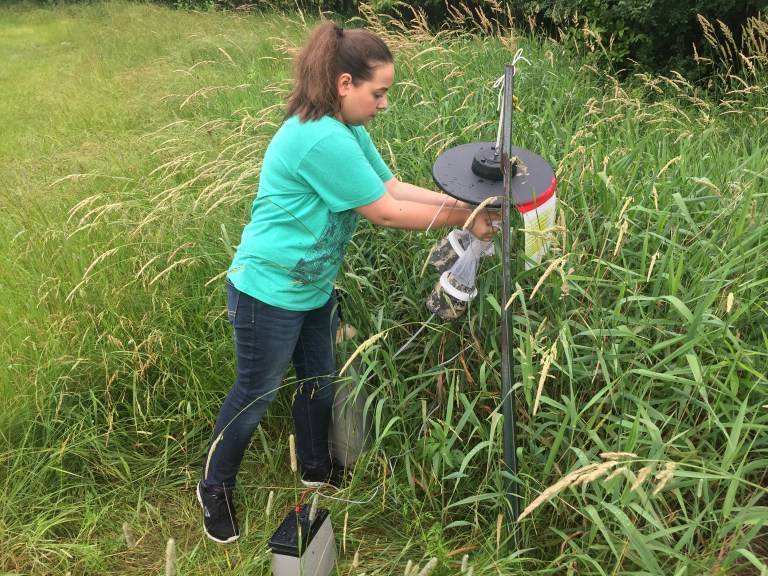abundance ranged from a 30 percent reduction to 2,009 percent increase.
However, the proportion of “nulliparous” mosquitoes—i.e., those that have never had a blood meal nor produced offspring—increased significantly, and West Nile infection rates decreased at one site.
The increase of nulliparous insects is important, as their lack of previous feeding means they have not acquired and therefore cannot spread West Nile virus.
West Nile remains a significant problem in the Chicago area, and Illinois in general. Between 2002 and 2018, 2,634 human infections and 176 deaths were reported. Chicago and its suburbs have been classified as a “hotspot” for the virus in the U.S. Midwest, because of recent outbreaks and consistently high annual infections in some areas.
In Illinois, West Nile virus is spread by two mosquito species: Culex pipiens and Cx. restuans. The species feed mostly on birds and occasionally mammals, including humans. To control the mosquitoes, abatement districts usually employ public information efforts, source reduction, larval surveillance, and removal of larvae from storm water basins. Active controls such as ULV truck-based applications come into play when the risk of infection is high. Few studies, however, have fully evaluated the effectiveness of these active controls, and those that have been conducted have yielded contradictory results—just as Bartholomay’s team’s abundance data appeared contradictory.

In a new study on truck-mounted mosquito-control sprays, the proportion of local mosquito populations that could potentially carry West Nile virus decreased after treatments, even though overall numbers of mosquitoes weren’t affected—an “invisible” but positive sign about the utility of such mosquito management efforts. Here, study lead author Kristina Lopez, Ph.D., of the Department of Entomology at the University of Wisconsin at Madison, checks a mosquito trap where local mosquito populations were monitored after insecticide applications. (Photo by Justin Harbison, Ph.D.)
For their study, Bartholomay’s team used a number of measures, including abundance, age of mosquitoes and West Nile virus transmission. “We were really impressed that, of all the things we measured, it was the age-structure shift that was most remarkably different between control and treated sites,” she says. “This is an ‘invisible’ impact of adulticide use for mosquito control, because it takes some additional effort to dissect the mosquitoes and check the ovaries for evidence of having a previous blood meal. And that invisible impact could have real-world consequences for West Nile virus transmission.”
For mosquito control districts, this could help tailor control measures to reduce disease risk. If a large proportion of mosquitoes after treatment are nulliparous, then West Nile virus reduction will more likely appear, even though overall mosquito populations remain high. In this study, older mosquitoes which had produced offspring appeared to be more susceptible to the insecticides.
“We view this as a win for public health because there is less risk of people and animals being exposed to an infected mosquito,” Bartholomay says. “A reduction in West Nile virus … would also impact whether or not mosquito control operations would have to implement additional mosquito control measures.”


